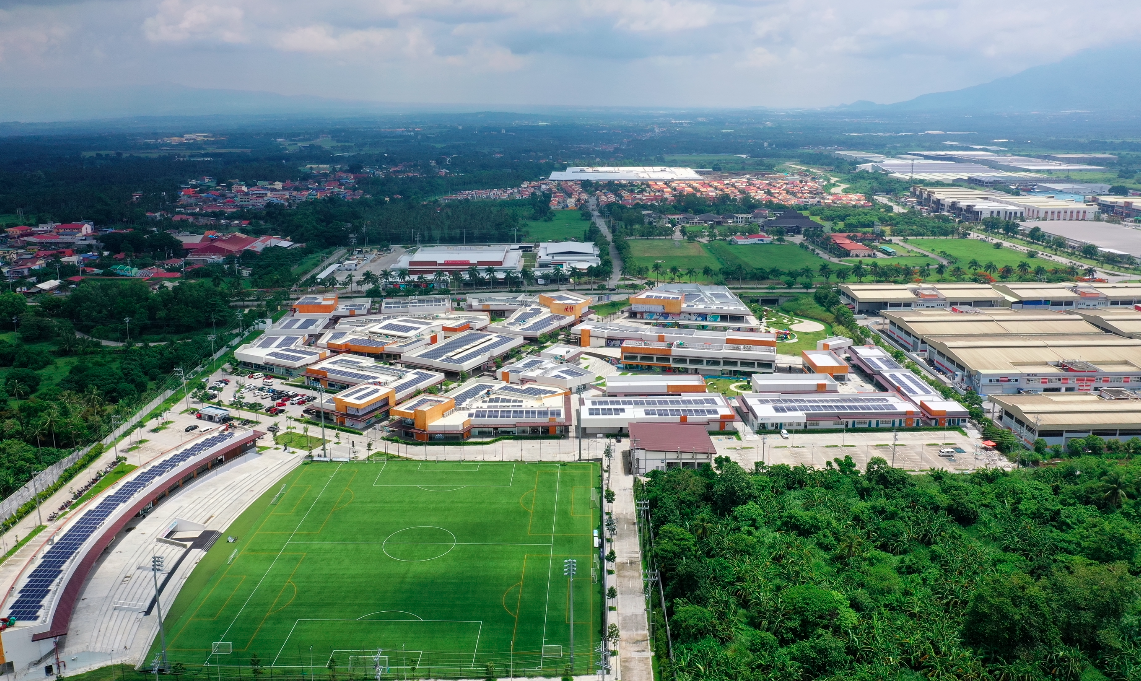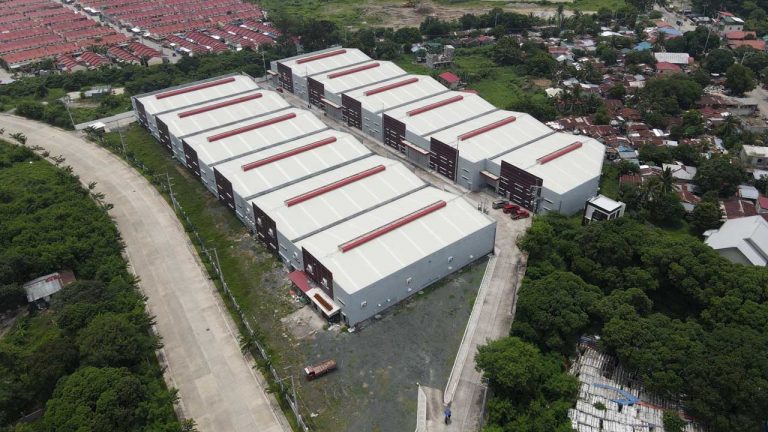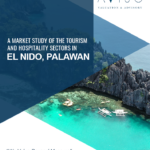
The Commission on Audit (COA) recently released their Annual Financial Report for Local Government for 2020. The report includes 81 provinces’ financial performance, changes in net assets/equity, and cash flows. It also highlights the richest provinces in the Philippines, which will provide an excellent opportunity for the local government units on the list to attract additional investors.
Showing due diligence in safeguarding the region’s assets, practicing good financial management, transparency, accountability, and the leaders’ active efforts to find and encourage investors to relocate their businesses to their jurisdiction are the major drivers to the provinces’ growth.
Here are the Top 10 wealthiest provinces in the Philippines (based on net assets/equity), according to the 2020 Annual Financial Report for LGU.

Photo by: Zany Jadraque/Unsplash
1.Cebu: P208,271,460,000
Cebu is truly the Queen City of the South. As one of the Philippines’ most developed provinces, it serves as a global hub for business processing services, tourism, shipping, furniture manufacturing, and heavy industry. It also continues to entice large investors to build multibillion-dollar projects, causing the land value in Cebu to skyrocket.
Ayala Land announced last year its plan to invest 90 billion pesos ($1.8 billion) in the development of a mixed-use commercial and residential waterfront estate in Cebu.
Meanwhile, the P25 billion NUSTAR Resort and Casino will be a 9-hectare (22-acre) resort and casino complex with restaurants, bars, a mall, convention center, casino, park, theater, and at least three hotels. It’s a joint venture between the Cebu City Government and Universal Hotels and Resorts, Inc.
Cebu’s impressive economic growth and investment over the last few years is also a direct result of national infrastructure projects. These include the P26.62 billion Metro Cebu Expressway, the P16.31 billion Cebu Bus Rapid Transit (BRT), the P76.41 billion Cebu-Mactan Bridge, and Coastal Road Construction Project, and the P9.9 billion New Cebu International Container Port.
 Image from Aboitiz InfraCapital
Image from Aboitiz InfraCapital
2. Batangas: P21,856,260,000
Batangas is a major contributor to the Calabarzon region’s economic prosperity. Agriculture and fisheries are the province’s major sectors, with abundant pineapple fields, tuna farms, and sugar plantations. Similarly, manufacturing, logistics, and banking businesses are thriving, as evidenced by the presence of several industrial parks in the area.
The LIMA Technology Center, a 700-hectare estate with over a hundred locators, is the largest industrial park. The First Philippine Industrial Park, which spans over 500 hectares, and the Light Industry & Science Park IV that covers 170 hectares of industrial space in the heart of Malvar.
Batangas hosts various vibrant residential communities. AboitizLand, a well-known real estate developer, has a few projects in the province, including Seafront Residences and The Villages at Lipa. Siena Hills, a project of Suntrust Properties is an Italian-themed community that will attract both young and growing families. Meanwhile, Pueblo de Oro Development Corp. (PDO), the ICCP Group’s real estate arm, will construct Townscapes Malvar, a 42-hectare live-work community.
The 50-kilometer-long Cavite-Tagaytay-Batangas Expressway (CTBEX) will cut the travel time from Batangas to Cavite, and the capital region. It will traverse Nasugbu in Batangas and the growth centers of Silang, Tagaytay, Amadeo, Mendez, Alfonso, and Magallanes in Cavite. It will have the following interchanges when finished: Silang, Pook, Aguinaldo, Amadeo, Mendez, Alfonso, Magallanes, and Nasugbu.

Photo from Robinsons Home
3. Rizal: 20,979,600,000
Rizal province is known for its rich agriculture that produces high-value crops, while its aquaculture is abundant in culturally or commercially produced freshwater seafood. It is also a progressive province outside of Manila that is expected to see a surge in real estate demand in the coming years. The province is regarded as one of the most desirable places to settle down and raise a family due to its proximity to modern amenities.
Weekend bonding with the family will be stress-free if you decide to move to Springdale II at Pueblo Angono as you will be near SM Center Angono, Xentro Mall, Shopwise Antipolo, and Robinsons Place Antipolo. There are several medical facilities, including Angono Medics Hospital, Antipolo Doctors Hospital, and Unciano Medical.
Angono will become more accessible in the coming years as the government pushes more infrastructure projects. The Angono-Antipolo diversion road reduces travel time between the two Rizal areas while decongesting existing roads. The MRT-4, which will connect the Rizal province to parts of Metro Manila, will have a station in Taytay, a municipality near Angono. The P400-billion Circumferential Road-6 project is seen as an essential infrastructure that will jumpstart the local economy as it will directly pass through the province’s industrial zone, making the location an ideal place to set up businesses that will provide employment and much-needed local revenue in the form of taxes.

Image by KentVince/Wikipedia
4. Davao De Oro: P18,750,900,000
Davao de Oro remains the wealthiest province in Mindanao in terms of assets according to the Commission on Audit’s 2020 report. The province’s economic drive was caused by numerous business establishments, banana plantations, and vast gold and silver mines throughout the province, which was further augmented by its modern transportation infrastructure.
Dubbed as “The Golden One”, Davao De Oro has one of the largest gold deposits in the Philippines, with gold mines in 10 of its 11 towns, the largest of which is at Mt. Diwalwal in the town of Monkayo. The provincial capital, Nabunturan, is also home to the largest gold ring in the Philippines, “The Solidarity Ring.”
Agricultural products such as rice, coconut, cacao, coffee, papaya, mango, pineapple, durian, and banana are the province’s main sources of income. Some province residents have fish ponds and culture their own fish such as tilapia and milkfish.

Photo by: ProjectLUPAD
5. Bukidnon: P16,732,620,000
Dubbed as the “Food Basket of Mindanao”, Bukidnon has a progressive agriculture-based economy. It is a major producer of rice, corn, sugar, coffee, rubber, pineapple, tomato, flowers, cassava, and other fruits and vegetables. It is also a major producer of chicken, hogs, and cattle.
In fact, two of the country’s Food manufacturing giants – Del Monte Philippines and Dole Philippines have been operating in the province for years.
In addition, Phil-Agro Industrial Corporation produces starch, and Menzi Agricultural Development produces cacao. San Miguel Foods Corp. (SMPFCI), Monterey Farms Corp., and Swift Foods, Inc. have expanded their contract breeding and growing operations in the province.
Meanwhile, several adventure and eco-tourism parks have contributed to the province’s popularity, making it one of the top destinations for tourists visiting the Philippines.
With the ongoing upgrading and development of roads that connect entry points, service, and commercial centers in the province, access to major places in Bukidnon has greatly improved. The proposed Bukidnon International Airport Development Project located in Maraymaray, Don Carlos Bukidnon will create the province’s first airport facility. It intends to open up Central Mindanao to more economic activities while enhancing Bukidnon’s tourism industry by serving as a gateway for major tourist destinations in Bukidnon from other parts of the country and abroad.

Photo from: Perajet
6. Surigao Del Norte: P13,195,740,000
Surigao del Norte, also known as the “Gateway to Mindanao,” is the second northernmost of the Mindanao provinces and an important transportation hub between Visayas and Mindanao. The Lipata ferry terminal connects Mindanao to Luzon via Eastern Visayas.
The province’s northernmost islands, Siargao and Bucas Grande are known for their long stretches of sugar-fine beaches, vast mangrove forests, and deep waters teeming with marine life.
Surigao City, the provincial capital, is popularly known as the City of Island Adventures and is regarded as a haven of leisure and adventure due to its 17 panoramic islands with long stretches of pristine white sand beaches, mystical caves, vast mangrove forest, and underwater scenery.
There are two Big – Ticket Infrastructure Projects in the region. The Siargao Island Sports and Tourism Complex in Dapa costs P630.2 billion and features world-class facilities and amenities. This 6.3-hectare Sports and Tourism Complex is now fully operational and ready to host national and international sports and tourism events. With the establishment of these facilities, the people of the Islands now have a place to develop their skills and talents, while also bringing recognition to the province and the country. It is also expected to boost the island’s thriving tourism industry.
Meanwhile, the Catangnan-Cabitoonan Bridge, as well as the Libertad Bridges 1 and 2 in General Luna is a game-changer for the locals. These three bridges connect Sta. Cruz’s barangays. Sta. Cruz Fe, Libertad, Cabitoonan, and Catangnan, improving accessibility and mobility of people, goods, and services to and from the island’s tourism hub.

Photo by highlights.photo/flickr.com
7. Isabela: P12,518,770,000
Dubbed “The Queen Province of the North,” Isabela is one of the premier provinces in the north and most progressive in the country. Isabela has been named the Philippines’ second-largest rice producer and top corn producer.
Isabela, strategically located in the heart of the Cagayan Valley region, is recognized for its strengths in business and industry. The province’s main commercial centers are the cities of Cauayan, Ilagan, Santiago, and the town of Roxas. Malls and fast-food restaurants from Metro Manila have recently opened in these key trading hubs.
Since the beginning of the twenty-first century, an increasing number of foreign and domestic investors have chosen Isabela as the location of their business ventures. Mindanao Grains Processing Company, Inc., SN Aboitiz Power- Magat Inc., Universal Leaf Philippines, Coca-Cola FEMSA Philippines, Inc., San Miguel Corporation, RC Cola, and Pepsi Cola are at the top of the list.
Isabela Province is surrounded by a number of man-made and natural tourist attractions. Powdery white beaches and warm beds of crystalline water span the coastlines municipalities of Palanan, Divilacan, Maconacon, and Dinapigue. The Sierra Madre also has diverse flora and fauna, with 60% of the Philippine endemic species found there. It encompasses 359,000 hectares of both marine and terrestrial ecosystems.

Image from BusinessWorld
8. Cavite: P12,425,720,000
Cavite province has grown rapidly in recent years. The region is known for having rich agriculture that contributes to its income. According to a local government report from 2019, crop production took up approximately 45,107 hectares of total land area, accounting for 76.54% of total agricultural space. Food crops covered 9,833 hectares of that area, yielding 89,531.63 metric tons, with vegetables registering the largest number, 34,469 metric tons. Meanwhile, rice totaled 26,743 metric tons, followed by 23,145 root crops and 5,174 corn.
Despite being primarily agricultural, Cavite is also highly industrialized. It boasts of economic zones located throughout the region, with over 60 economic zones in operation or under development.
In addition, the province continues to offer promising opportunities for real estate development and well-planned residential projects. Dubbed the “Green City of the South,” Megaworld’s Maple Grove township will bring urbanization to Cavite with its modern amenities set in a modern Asian enclave. Arden Botanical Estate is another highly anticipated Megaworld project. This township will cover 251 hectares of land and will include residential and leisure villages, a mixed-use commercial district, sports and adventure parks, and a school.
The economy of Cavite is expected to grow further as new infrastructure is completed or under construction. The CALAX (Cavite-Laguna Expressway), a 45-kilometer tolled highway connecting the CAVITEX (Cavite Expressway) and the SLEX (South Luzon Expressway), was completed last year. The current LRT Line 1 will be extended up to Bacoor, Cavite, covering a distance of 12 kilometers.
Aside from land transportation improvements, the government is planning to upgrade an aviation hub in Cavite. The proposed 1,500-hectare Sangley international airport will include four runways, airside and landside facilities, and a terminal building capable of accommodating more than 100 million passengers per year.

Photo from Guide to the Philippines
9. Leyte: P12,005,940,000
Leyte’s economy is a mix of agriculture, fishing, industrial, energy, and mining. Rice is farmed in the lowland plains areas, particularly around Tacloban, whereas coconut farming is the main cash crop in the upland and mountainous areas. Sugarcane plantation is the most important product in Ormoc City. Since Leyte is an island province, fishing is a primary source of income for coastal residents.
Ormoc and Tacloban are two progressive cities in Region 8, and their economic growth has attracted the interest of investors. Despite being severely damaged by Typhoon Yolanda in 2013, their resilience and indomitable spirit had slowly restored their economies. Tacloban City is currently experiencing a rapid economic recovery and has been dubbed the “rising phoenix of the East” for overcoming the challenges that once classified their city as “ground zero.”
Meanwhile, following the improvements in internet connectivity in their area, Leyte anticipates an increase in investments and jobs, particularly from business process outsourcing firms.
Land for commercial spaces and other businesses is being made available in the region to meet the increasing demand from commercial and residential investors. Anticipating the town’s growth, the local government is likely to focus the commercial boom on the town’s outskirts and other alternative areas in order to preserve the town’s old “Poblacion,” or commercial district.
The Board of Investments (BoI) announced last year the master plan for the Philippines’ first ecological industrial zone, targeted at copper producers. The Leyte Ecological Industrial Zone (LEIZ) will be divided into three clusters: the main manufacturing hub, a commercial and agro-industrial area, and agro-industrial development and training facilities.

Photo by ProjectLUPAD
10. Iloilo: P11,205,890,000
Iloilo is a hub for numerous IT industries and BPO firms. According to Leechiu Property Consultants, the province had the highest office take-up of business process outsourcing (BPO) firms last year, accounting for nearly half of the 389,000 square meters in office space demand.
Premier developers such as Megaworld, Ayala Land, SM Prime, and Robinsons Land have begun construction for BPO office spaces in the district’s old airport area. In addition, Megaworld began construction on the Belmont Hotel last year at the 72-hectare Iloilo Business Park (IBP) in Mandurriao District, near the Iloilo Convention Center.
Various local and national infrastructure projects are expected to support the city’s booming investments. In 2017 and 2019, the local government spent PHP246.89 million from its general fund to begin the construction of an eight-story legislative building with multi-level parking. It has also collaborated with the SM Development Corporation on the PHP217 million low-rise housing project for city hall employees on a local government-owned lot in Barangay San Isidro, Jaro Uswag Subdivision.
The Iloilo-Guimaras Bridge, a Php 27.15 billion project, is one of the most important infrastructure projects in Western Visayas, with a target completion date of 2023. It is expected to improve accessibility to other provinces in Western and Central Visayas, contributing to the growth of the regions’ thriving economies.
Written By: Mary Grace Ladringan and Angelo Gandia
Aviso Valuation and Advisory Corp. is a real estate consultancy firm that offers valuation and business advisory services compliant to international standards such as the International Valuation Standards (IVS) and International Financial Reporting Standards (IFRS). To assure that we only produce high-quality deliverables, as needed, we do tasks beyond the usual appraisal process like verifying pertinent property documents (i.e. land titles, tax declarations, etc.) with the appropriate government agencies for due diligence purposes prior to the acquisition of the properties.
References:
https://sugbo.ph/2020/multi-billion-projects-cebu/
https://www.lamudi.com.ph/journal/batangas-neighborhood-guide/
https://www.bworldonline.com/pdo-launches-township-project-in-batangas/
https://www.lamudi.com.ph/journal/rizal-new-capital-antipolo/
https://www.lamudi.com.ph/journal/advantages-property-rizal/
https://www.lamudi.com.ph/journal/rizal-neighborhood-live-angono/
https://thephilbiznews.com/c-6-project-spells-investment-boom-for-taytay/
https://surigaodelnorte.gov.ph/pres-duterte-inaugurates-the-big-ticket-infra-projects-in-siargao/
https://www.islandsproperties.com/places/surigaodelnorte.htm
https://www.lamudi.com.ph/journal/cavite-trend-report-2019/
https://www.lamudi.com.ph/journal/infrastructure-projects-central-southern-luzon/
https://www.bworldonline.com/master-plan-launched-for-leyte-industrial-zone/
https://www.primabode.com/few-compelling-reasons-why-you-need-to-invest-in-ormoc-and-tacloban-now/
https://www.pna.gov.ph/articles/1005074
https://www.pna.gov.ph/articles/1164155
https://www.lamudi.com.ph/journal/iloilo-biggest-bpo-space-takeup/









